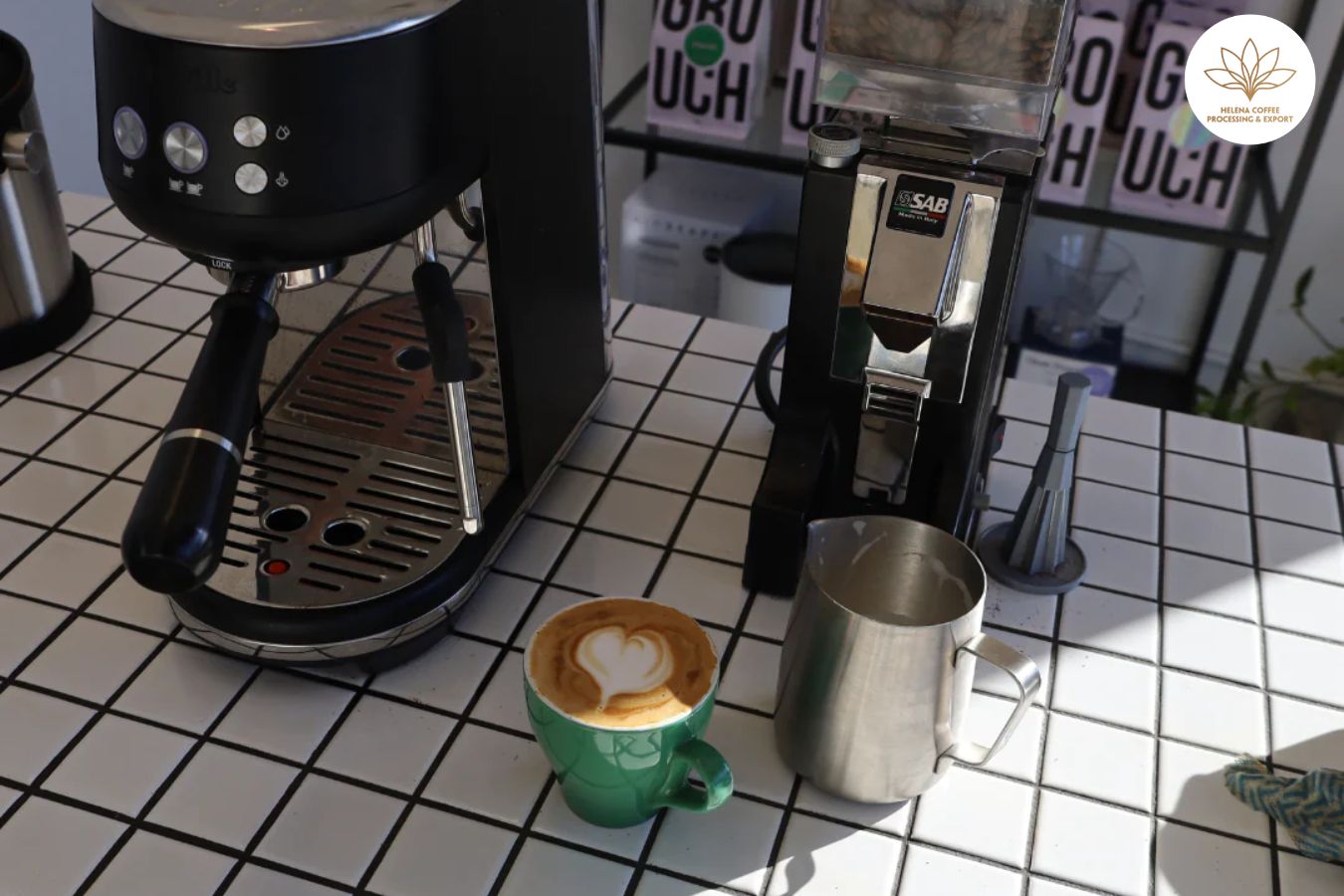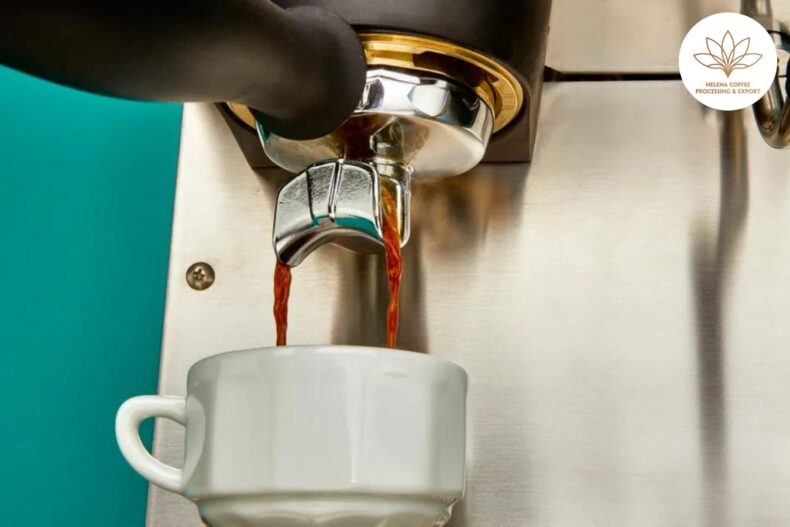
How To Descale An Espresso Machine: Ensuring The Well-Being OF Your Espresso Machine. Prioritizing Your Espresso Machine’s Health and Happiness. Consider the vital role your espresso machine plays in your daily routine, delivering that essential, sumptuous espresso shot that kick-starts your mornings. In areas like mine with hard water, and for those who indulge in several cups a day, regular descaling becomes crucial, sometimes as frequently as bi-monthly.
Accumulated limescale is more than just a nuisance; it can impede your machine’s functionality and even compromise the nuanced flavors of your coffee. Regardless of your water source—even if you’re using bottled water—routine descaling is a wise practice to ensure the longevity and performance of your espresso machine.
By taking this proactive measure, you’re not only ensuring the machine’s longevity but also guaranteeing the consistent quality of your coffee, much to the delight of yourself and anyone else who savors a cup. Stay tuned to discover the steps to effectively descale your espresso machine.
Essential Supplies for Descaling Your Espresso Machine
To commence the descaling process, you’ll need to select one of the following cleaning agents:
- Citric Acid
- White Vinegar
- A specialized commercial descaling solution
Before settling on a descaling method, it’s crucial to consult your machine’s owner’s manual for any specific recommendations or prohibitions. For instance, if you’re a Breville owner, we have a guide tailored for descaling Breville espresso machines.
Understanding your water’s mineral content can also guide your descaling schedule. High mineral levels indicate the need for more frequent descaling to prevent build-up. To assess your water, consider using a water testing kit available here.
While each espresso machine and local water supply may differ, the core descaling process remains consistent. We’ll delve into the details of each descaling agent—citric acid, vinegar, and commercial solutions—to empower you with the knowledge to choose the most suitable option for your machine and preferences.
Exploring Citric Acid as a Descaling Agent
Citric acid, a natural compound present in citrus fruits such as lemons and limes, is available in a granular form resembling table salt, often referred to as “sour salt”. Its culinary uses are diverse, as it serves as a pure acidifying agent, an excellent substitute for vinegar or lemon juice.
Given its acidic properties, citric acid is an effective descaling solution for coffee machines, removing mineral buildup with ease. You can find citric acid in health food stores, select grocery stores, or online.

If you’re concerned about how to clean your espresso machine with citric acid, let your worries dissolve like the scale it’s designed to remove. The process is straightforward. A commonly recommended mixture involves dissolving two tablespoons of citric acid into one quart of water.
However, it’s important to be aware of the advantages and limitations of using citric acid as a descaler. To ensure comprehensive maintenance, consider alternating between citric acid and other descaling products. For instance, applying a citric acid solution for three consecutive cleanings followed by a commercial descaler on the fourth occasion can provide a balanced cleaning regimen for your espresso machine.
Utilizing Vinegar for Descaling
Distilled white vinegar stands as a simple yet effective descaling option. For optimal results, a mixture comprising 25% vinegar to 75% water is recommended, though some users and manufacturers suggest that a 50% solution can also be effective.
When opting for a commercial descaler, follow the specific instructions provided with the product. Ensure compatibility with your espresso machine and verify that the descaler is touted as 100% natural, if that’s your preference.
Alternative Natural Descalers
While lemon juice is sometimes mentioned as a descaling solution, its efficacy, especially in areas with hard water, is not as reliable as vinegar or citric acid, which are also more cost-effective options.
For a comprehensive approach, you might alternate between using vinegar for routine descaling and introducing a commercial product every third or fourth cleaning session.
Basic Cleaning vs. Descaling
Before diving into the descaling process, it’s worth noting that sometimes a simple backflush with clean water is sufficient for maintaining your espresso machine. However, if you suspect your machine requires a deeper clean, we’re ready to guide you through the next steps.
A Detailed Guide to Descaling Your Espresso Machine
The world is home to an incredibly diverse array of home espresso machines, many of which represent a significant investment.
To ensure you’re following the optimal descaling protocol, always refer to your machine’s owner’s manual for tailored instructions.
For those fortunate to have an espresso machine with an automatic cleaning and descaling cycle, congratulations—feel free to celebrate with a joyful shimmy. However, if your machine requires a hands-on approach, prepare to roll up your sleeves and tackle the descaling process manually.
Select Your Descaling Agent
You have the freedom to choose your descaling agent—natural options like citric acid, vinegar, and lemon juice, or a commercially-made product. If opting for a store-bought descaler, ensure it’s labeled all-natural if that’s your preference. As you become more experienced, you’ll likely settle on a favorite method, be it a DIY mixture or a ready-made solution, and perhaps even alternate them to suit your machine’s needs.
Prepare Your Mixture
The preparation of your descaling solution will vary. For citric acid, it involves dissolving the powder in water; for vinegar, it’s about diluting it properly. With commercial products, always adhere to the manufacturer’s instructions. While it’s tempting to bend the rules occasionally, your espresso machine’s health isn’t the place to do it.
Run the Descaling Solution Through Your Machine
Despite the differences between machines, the descaling process typically follows a similar pattern. Fill the reservoir with your chosen solution (mixed with water) and run it through the machine as if brewing coffee. This includes passing the solution through the steam wand. This “cleanse” aims to remove mineral buildup that affects the machine’s performance and the taste of your espresso. For those with hard water, consider a double cleanse to ensure all deposits are removed.
Perform a Thorough Rinse
After descaling, refill the reservoir with only water and run it through again to rinse out any remaining descaler. You want to avoid any aftertaste of vinegar, citric acid, or other descaling agents in your next espresso—this step is about ensuring the integrity of your coffee’s flavor.
Assess the Rinse Water
Post-rinse, inspect the water that has been cycled through. It should be clear and smell like nothing but water. Any scent of the descaling agent or cloudiness means it’s time for another rinse cycle. If in doubt, a pinch of baking soda can help you test for residual acidity. Once the water runs clear and odorless, you’re all set to brew coffee again.
Stay Caffeinated
Descaling takes time (about 20 minutes), but you don’t have to be coffee-deprived. Keep some chocolate-covered coffee beans on hand for a quick caffeine fix that’s as delicious as it is convenient. Enjoy the process, knowing that it’s all in the service of exceptional espresso.
Savor Your Handiwork
Having meticulously tended to your espresso machine, the moment has arrived to indulge in the fruits of your labor: a rich, aromatic espresso. It’s your well-deserved reward for the care and attention you’ve invested. And if the mood strikes, why not elevate the occasion with a splash of coffee liqueur? Discover a recipe to complement your freshly brewed cup here.
We hope this guide has been a valuable resource. Your feedback is always welcome, so please share your thoughts and experiences in the comments below.
FAQS:


